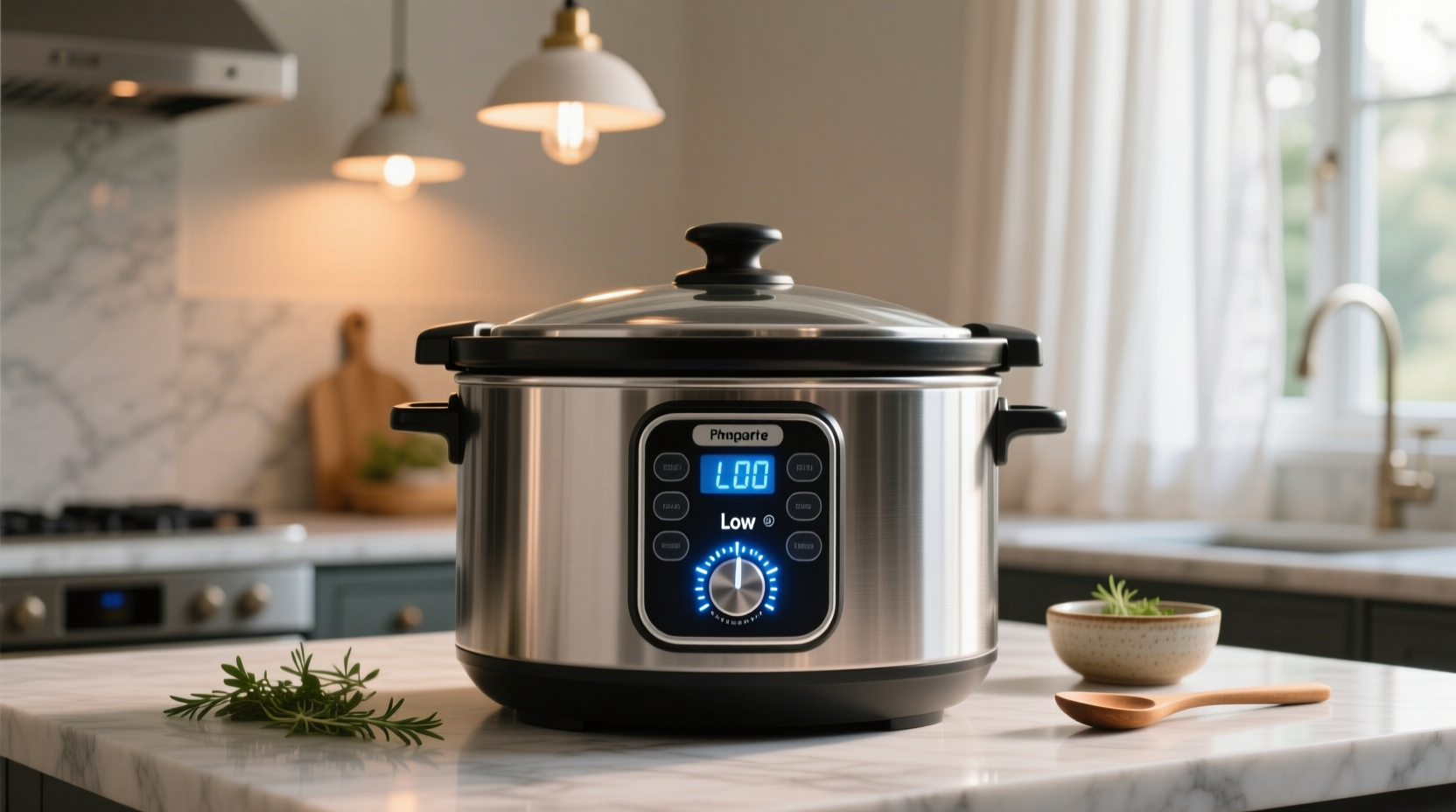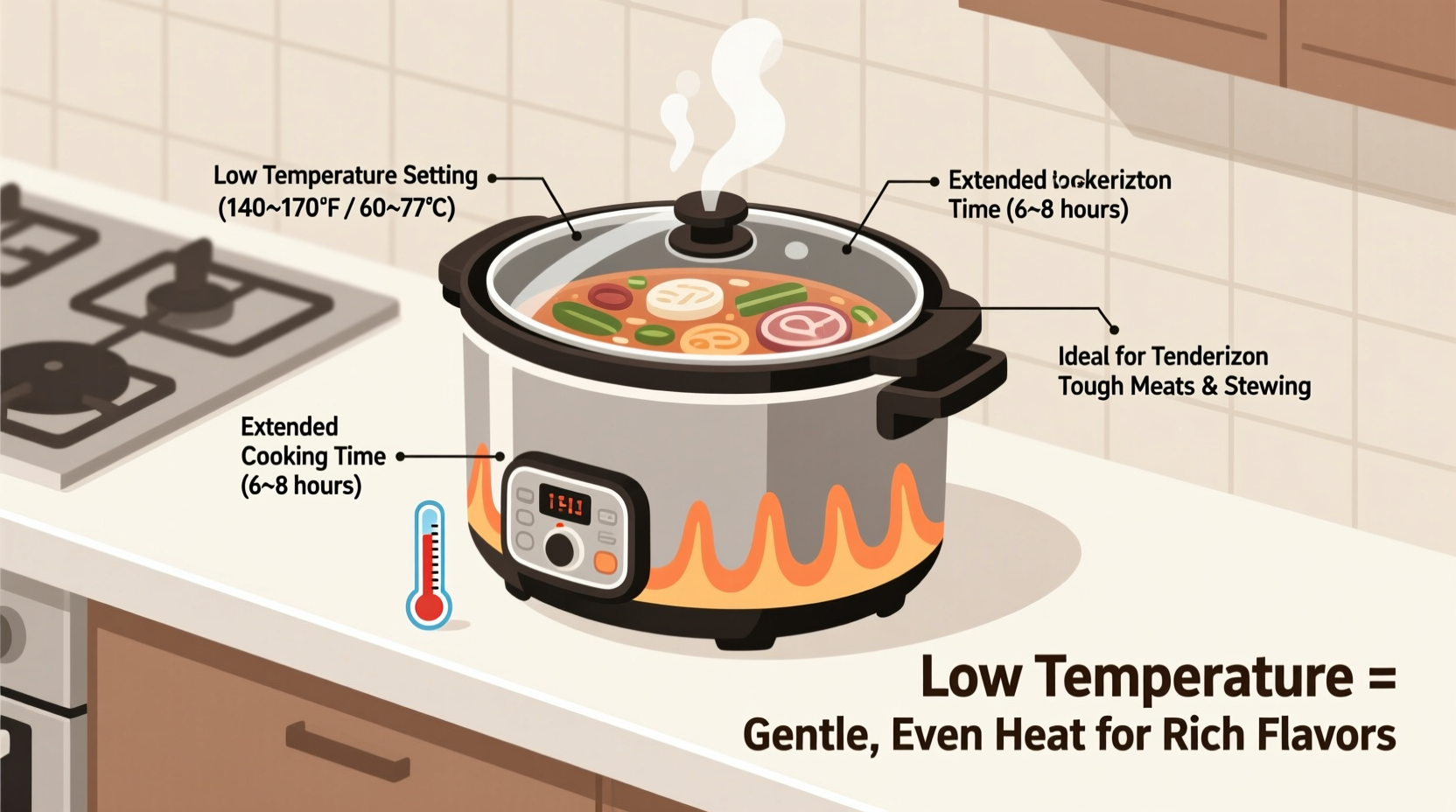Slow cooker low temperature typically ranges from 170°F to 200°F (77°C to 93°C), providing gentle, consistent heat ideal for tenderizing tough cuts of meat and developing complex flavors over extended cooking periods without risk of burning.
Ever wonder why your pot roast turns out perfectly tender when cooked on low all day? Understanding slow cooker temperature settings isn't just kitchen trivia—it's the key to transforming ordinary ingredients into extraordinary meals. When you grasp how low temperature cooking works, you'll consistently achieve restaurant-quality results with minimal effort.
Why Low Temperature Matters in Slow Cooking
Slow cookers operate on a simple but scientifically sound principle: maintaining a consistent, low heat that gradually breaks down connective tissues in meats while preserving moisture. Unlike conventional cooking methods that risk drying out ingredients, the low setting creates an ideal environment for flavor development.
The "low" setting on most modern slow cookers maintains a temperature between 170°F and 200°F (77°C to 93°C). This range sits safely above the USDA's recommended minimum cooking temperature of 140°F (60°C) while staying well below the boiling point of water (212°F/100°C). This precise temperature control prevents scorching while ensuring food reaches safe internal temperatures over time.
| Slow Cooker Setting | Temperature Range | Equivalent Stovetop Time | Best For |
|---|---|---|---|
| Low | 170-200°F (77-93°C) | 7-10 hours | Tough cuts of meat, beans, soups |
| High | 200-300°F (93-149°C) | 3-4 hours | Quick meals, reheating, delicate ingredients |
| Warm | 165-175°F (74-80°C) | Indefinite | Holding cooked food safely |
The Science Behind Low Temperature Cooking
When you select the low setting on your slow cooker, you're initiating a carefully controlled thermal process. The heating element gradually warms the ceramic or metal insert, which then transfers heat to the food through conduction. Unlike stovetop cooking where heat fluctuates, slow cookers maintain remarkably consistent temperatures.
According to the USDA Food Safety and Inspection Service, cooking temperatures between 140-165°F (60-74°C) are considered the "danger zone" where bacteria can multiply rapidly. However, slow cookers safely navigate this zone by spending minimal time in this range during the initial heating phase, then maintaining temperatures well above this threshold throughout the cooking process.
Food science research from the American Chemical Society explains that low temperature cooking allows collagen in meats to gradually convert to gelatin at around 160°F (71°C), creating that signature fall-apart tenderness without the risk of overcooking that occurs with higher heat methods. This transformation happens most effectively between 170-200°F—the precise range of your slow cooker's low setting.

When to Choose Low Temperature Settings
Understanding when to use low versus high settings transforms your slow cooking results. The low setting shines with these applications:
- Tough cuts of meat like chuck roast, brisket, or pork shoulder benefit from 8-10 hours on low, allowing connective tissues to fully break down
- Dried beans and legumes require the extended gentle heat of low setting to become tender without splitting
- Complex flavor development in soups and stews, where ingredients have time to meld naturally
- Unattended cooking when you'll be away from home for 6+ hours
Professional chefs at America's Test Kitchen recommend using the low setting whenever possible for maximum flavor development. Their testing shows that recipes cooked on low for 9 hours consistently outperform the same recipes cooked on high for 5 hours in blind taste tests.
Food Safety Considerations for Low Temperature Cooking
While slow cooking is generally safe, understanding food safety principles is crucial. The FDA Food Code specifies that potentially hazardous foods must pass through the temperature danger zone (41°F-135°F/5°C-57°C) within four hours.
Modern slow cookers address this by heating contents to safe temperatures within the first 2-3 hours on low setting. To ensure safety:
- Always start with refrigerated or frozen ingredients
- Fill your slow cooker between one-half and three-quarters full
- Preheat liquids before adding to frozen ingredients
- Use a food thermometer to verify internal temperatures reach at least 145°F (63°C) for meats
According to research published in the Journal of Food Protection, properly operated slow cookers maintain temperatures well above the danger zone throughout the cooking process, making them a safe cooking method when used correctly.
Maximizing Results on Low Temperature Setting
For consistently excellent results when using your slow cooker's low setting:
- Brown meats first to develop richer flavors through the Maillard reaction
- Cut vegetables uniformly to ensure even cooking
- Layer ingredients properly with dense vegetables on bottom, meats in middle, delicate items on top
- Avoid lifting the lid—each peek releases heat and extends cooking time by 15-20 minutes
- Adjust liquid levels—reduce by 25% compared to stovetop recipes since evaporation is minimal
Remember that slow cooker temperatures can vary between models. For precision cooking, consider using an external thermometer to verify your specific appliance's actual temperature output on low setting.
Troubleshooting Common Low Temperature Issues
Encountering problems with your slow cooker's low setting? Here's how to solve common issues:
- Food not hot enough: Older models may run cooler—extend cooking time by 1-2 hours
- Excessive liquid: Reduce broth by 1/4 cup per hour of cooking time
- Meat still tough: Continue cooking in 30-minute increments until fork-tender
- Burning on bottom: Ensure sufficient liquid coverage and stir occasionally if possible
Consumer Reports testing shows that slow cookers maintain more consistent temperatures than many people realize, with most models varying less than 5°F (3°C) from their set point once fully heated.











 浙公网安备
33010002000092号
浙公网安备
33010002000092号 浙B2-20120091-4
浙B2-20120091-4